-
Posts
1,641 -
Joined
-
Last visited
Content Type
Profiles
Forums
Gallery
Events
Posts posted by SJSoane
-
-
In setting up a rigging table for my 1760 English 74 HMS Bellona, I came across some ambiguities regarding backstays for the topmasts. Can someone help me figure this out?
Steel's tables for a 74 ca. 1800 list 3 pairs of standing backstays on the fore topmast set up with deadeyes, and also 1 pair of breast backstays set up with tackles. Lee's Masting and Rigging book confirms 3 pair of standing backstays for ca 1760, but says that there were no breast backstays between 1733 and 1839; the foremost backstay likely served as a breast backstay. Lees also refers to a running breast backstay set up with tackles, which sounds like Steel's breast backstays. Are Steel and Lees referring to the same thing with different names?
Best wishes,
Mark
-
Hi everyone,
More experiments. I am showing DMC cotton size 50 on the left, and linen on the right. The linen does not lay up nearly as well as the cotton.
Interestingly, I made the linen with 3 strands on each supply bobbin right hand (CW on the ropewalk), and it looked better than another I made CWW which was moe uneven and lumpy. But when I tried CW on one strand on each bobbin, it failed altogether. The strands unwound, then wrapped up in strange ways and broke. I wonder why it works so much better with multiple strands.
I don't see a pattern yet in how many strands make how large a rope.
The linen is .010 off the spool; laid up 6 strands it makes a rope .28 in diameter; and laid up 9 strands it is .035. I need to do more experiments to see a pattern.
Does someone know of a supplier of DMC egyptian cotton in the US in various sizes?
Best wishes,
Mark
- cristikc and fnkershner
-
 2
2
-
Thanks, Michael and druxey, that was a steep learning curve. But the great thing is, I figured it out and learned some new skills along the way. I had to be even more patient than usual, and walk away when I got impatient. And I had to be more systematic than usual, while carefully adjusting each face. I made a few sanding jigs that helped; I'll try to post those later. I also learned that I have to get even more tools....a few more files to expand my range of coarseness, and Michael, I look forward to seeing the watchmaker tweezers. Those could really come in handy!
Mark
-
-
Ed,
Looking at these lovely photos again reminds me of an issue that is becoming more important for me as I begin to close up a deck. How do you keep a lower deck clean, when you are sanding an upper deck or otherwise making sawdust? Did you cover the lower deck with something? And do you have a small vacuum of some kind, for cleaning up? I remember in the pre-crash days of a comment you made about turning the model upside down every once in a while...
Mark
-
Remco, that was a fabulous description. It is daunting to think how many more of those there are to make....;-)
Mark
-
Gary, it is great to see these details again!
Mark
-
Hi Remco,
Could you explain a little more how you did the splice and stropping?
Mark
-
How nice to see this. I agree with Greg. The metalwork and wood joinery are exceptional.
Mark
-
-
Thanks, Grant, Mark, Michiel, Robert, Ben, druxey and Karl. This has been a steep learning curve for me. Of all the things I read over the years, and watching other great build logs on this site, I had no idea that the chocks of the capstans were going to be so challenging. They have to fit very precisely into the angles between the whelps, or you can see the mismatch; they are angled at the back to fit against the angles of the drum, which you can also see if it is not right; they are beveled on the sides to fit the birdsmouth rabbets; and they are rounded on the front so that they make a perfect circle around the capstan, which you can see if it is not a perfect circle. They are too thin to clamp in a vise without breaking them with the force of a file, and almost too small to hold in fingertips. I sanded and filed a great deal off my fingertips while working on these. I became obsessive about not letting them slip from my grasp, because there was no way I would ever find them again.
I can't wait to work on a big project like the spokes of the helm! ....;-)
Best wishes,
Mark
-
-
Hi Meredith and Ulises,
I have spent the last several days creating an inventory of all of the rope I will need for the 3/16" scale Bellona 74. Then I can join you in experimenting with how to create a LH or RH rope of a given diameter, and know how big of an inventory I will need to create of each size. You keep me inspired at the possibilities of Jim's machine.
Mark
-
-
Hi Everyone,
I finally got to grips with the chocks for the capstan, which I now realize had been running me into the ground. I tried a half dozen different ways to machine them since they were so small and hard to hold. But in the end, I used a table saw to cut the angles, and then chisels and files to hand fit them into their slots. Smallest pieces I have ever fabricated.
I am thinking about color. I had long planned to do a red or black capstan, since so many 18th century models have one or the other. But the other day I saw the color photo of HMS Yarmouth, 1748, in Franklin's Navy Board Ship Models. It has the chocks in black, and the rest of the capstan natural. I tried one in the photo I am showing (the chock is still loose, and not yet tight up against the rabbet on top). I will sleep on it, and then decide once and for all. I have the dilemma Remco was facing about blackening his mast tops, which would hide all of his great detail. I am feeling the same about the capstan.
Alex, I am glad I could help with the wood. What is IPMS? It is not too far away, if you think it is worth seeing. And flattening and refinishing my bench made it feel like a brand new tool to play with. Long overdue. I guess I can thank those pesky capstans for pushing me into any other project but a capstan....
Best wishes,
Mark
-
Hi Michael, I sent you a PM. Alex, it is South American Boxwood. I bought it years ago from Woodcraft, but they have not been able to supply more for many years. I got a sample from HobbyMill that is every bit as good. You can find them at:
Mine is not as yellow as European Box; but it is a delight to work with. Fine, even grain, holds detail, cuts precisely.
Best wishes,
Mark
-
So after re-reading Lees and David Antscherl's book on Rigging a 6th rate sloop of war, this is how I see it for now, until someone has a better reading:
Strands are twisted left handed (S direction); multiple strands are twisted right handed to form rope (Z direction); and multiple ropes are twisted left handed to form cable (S direction).
Most lines are ropes twisted right hand. The largest rigging such as stays, shrouds, and anchor cables, are all cables twisted left hand.
Now to make life interesting, most threads that we can buy are already twisted right hand. So to make a standard right hand rope, we need to twist enough threads left hand (Jim's counterclockwise setting) to form left handed strands, three of which are then twisted right hand to form the rope.
The number of threads we load onto a supply spool will determine the size of the strands. After the strands are formed, we only load single strands onto the supply spools to form rope. And we only load single ropes to form cables.
To calculate how to form a rope of a given diameter, we need to know how big the strands need to be so that three of them make up the desired rope diameter. And to make the strands of the right diameter, we need to know how many threads are needed to make the strand of the desired diameter.
The same for calculating a cable. We need to know how big the ropes need to be so that three and sometimes four ropes will twist left handed to form the cable of the desired size.
So, let's say a strand is .01 inches in diameter, and three are twisted together to form a rope. Has anyone spotted a standard ratio for this, where for example we could say that the three together will be 1 1/2 or 2 times the diameter of the single strands? or this this variable depending upon the material? And for those of you who then spun ropes into cables, do you see a ratio of the individual ropes sizes to the finished cable size?
All for now!
Mark
-
Hi Ulises, Dave and Meredith,
Yes, Ulises, your comments makes perfect sense. When should we make up a line with many strands per spool, and when should we lay up a line left, then use those to lay up right, and so on?
I have an old spreadsheet of all of the lines needed for the Bellona, using James Lees' book on Masting and Rigging. I will try to consolidate this into a list of the actual diameters of lines needed for the ship, with notes of whether they should be cable laid, etc. Then we can see when a certain diameter should be many strands in one rope, or left hand turned into right hand, etc.
It will take me a few days; I converted from Microsoft Excel to Apple Numbers a few years ago, and a lot of cleanup is needed.
But now I have partners in figuring this out! I love this website.
Mark
-
Thanks, druxey, Greg, Grant, Ed and Remco.
I think working on those capstans has worn me out temporarily. Each step is only an tiny move forward, and I am so ready to move on. I only need to figure out how to attach the whelps so they are evenly spaced around the drum, and get some chocks in. But it seems a long hill to climb right now....
By the way, the workbench is based on an ancient European design, shown in the Workbench Book by Scott Landis. The noted woodworker Frank Klausz shows in great detail in this book (pp. 48-61) how he built his own example of a workbench his father and grandfather used. It so inspired me 20 years ago that I built one. Only mine was left-hand, and not as well crafted as Frank's. He says something about this that I think applies to ship models as well: "It's not my design--it's a thousand years old. The only credit we can take for this is that we made it and it's nicely done."
Ed, I just got the first scratches in my new finish on the bench, and initially thought, what a shame. But then I reminded myself, it is only a workbench!
Remco, I haven't tried this yet, but I think a straight board used on this shooting board will not need clamping. Just pushing it against the fence, and holding it down firmly, should keep it in place. We'll see. I may have to put some lever clamps in if this doesn't work. I deliberately did not apply a finish on the jig, so that there would be friction between the board and the top of the jig. A piece of fine sandpaper attached to the top may help if it needs more friction.
Mark
-
Meridith,
That would be great!
i only have a couple of attempts, but I'll pull the information together and post it.
Best wishes,
Mark
-
At some point, it would be helpful to begin recording how many threads and RH/LH steps one has to go through to create rope of a given diameter, starting with threads of different diameters. Then, when one needs a rope of a certain size, it would be easy to look up how many threads of what thickness, and how many steps are needed to construct it. Is anyone far enough along to have this kind of information?
I am looking at the anchor hawsers for the Bellona 74 at 3/16" scale, for example, and wondering how many threads, ropes, etc, will be needed to get to that size. I think it will use my entire supply so far!
Mark
-
Like Remco reported the other day, I temporarily ran out of energy for the ship. I moved to a larger scale project, and finally built a shooting board for planing exact right angled and straight cuts on the edges of small boards.
I found a great design online, which I modified to suit my needs. You can see the original article at:
http://www.highlandwoodworking.com/woodnews/2010july/shootingboards.html
This is a great design. It runs the plane along a sloping surface, so that the entire width of the plane is used to even out wear. It also provides a shearing cut, which helps with hard wood like boxwood.
A shooting board works on the very clever idea that the plane blade in a normal plane does not go all the way to the side of the plane. So when it is run along the fence of the shooting board, the blade cuts into most of the fence, but not the little edge where the blades stops short of the side. This little edge provides a constant surface for guiding the plane.
I still have to attach a fence, but that will have to wait for more time in the shop.
With a good fence at exactly 90 degrees and a very sharp plane, I could trim the ends of slightly too long carlings, rather than using the disk sander. I'll see how it works.
That is a Lie Nielsen plane designed to use with shooting boards. A gem to use.
Mark
- Modeler12, aviaamator, butch and 8 others
-
 11
11
-
Hi everyone,
I got a little further on cutting the birdsmouth rabbets on the whelps for the chocks. Using the little holding jig really helped. I was able to use the scoring marking gauge to keep the joints at the same height, and then a free-handed chisel cut for the birdmouth. By the way, I spot glued the whelps into the jig to hold them in place, then soaked them off with isopropyl alcohol 99%. The spots of glue were really tiny, but they held.
Best wishes,
Mark
-
Thanks, Ulises, I'll try the jig idea. It is a way better idea than stringing thread around the shop floor!
Mark



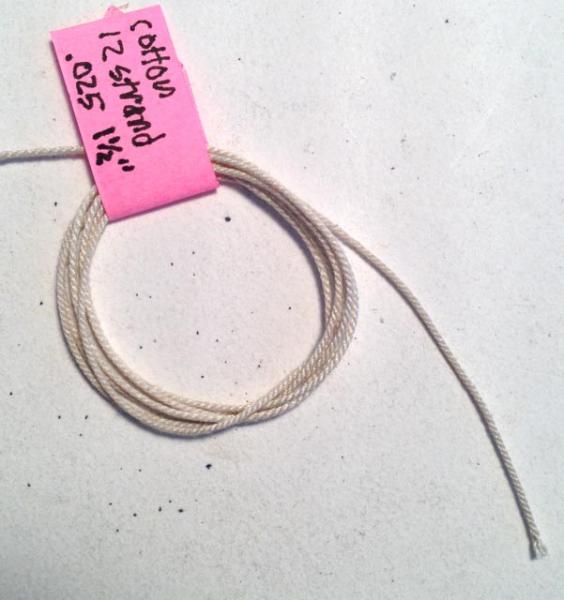
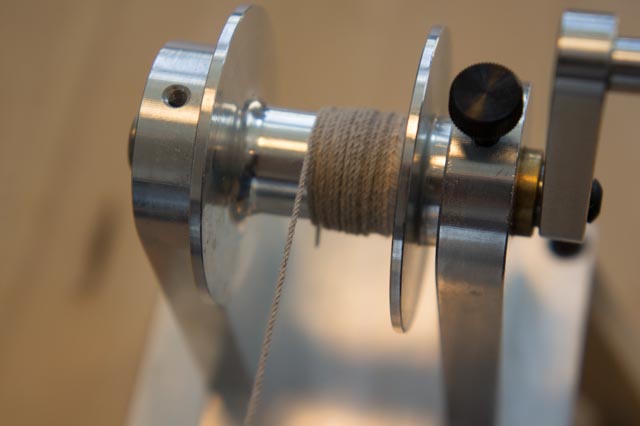
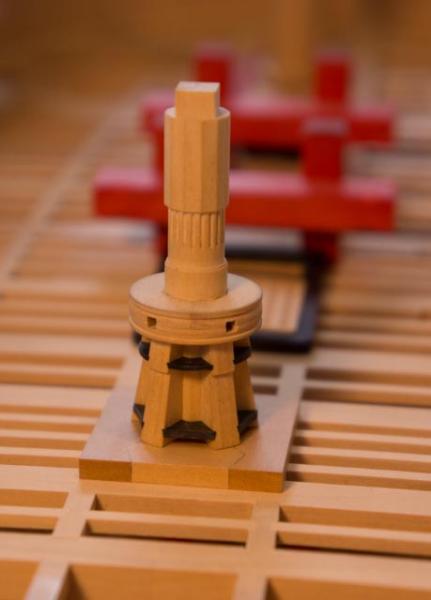
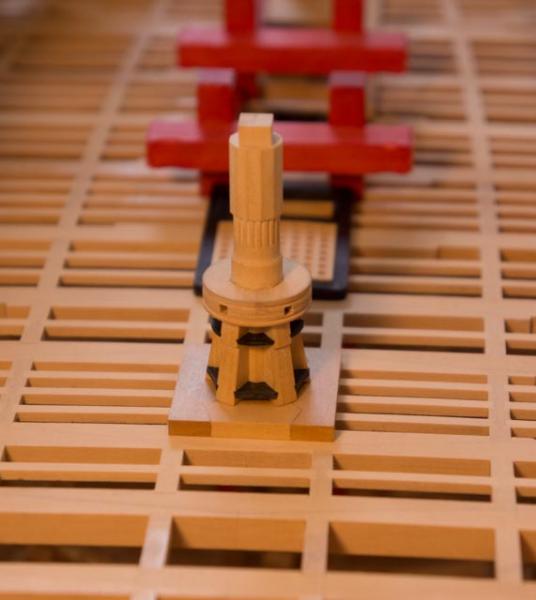


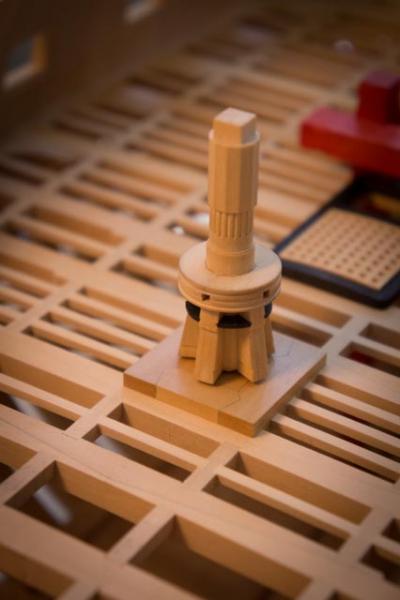
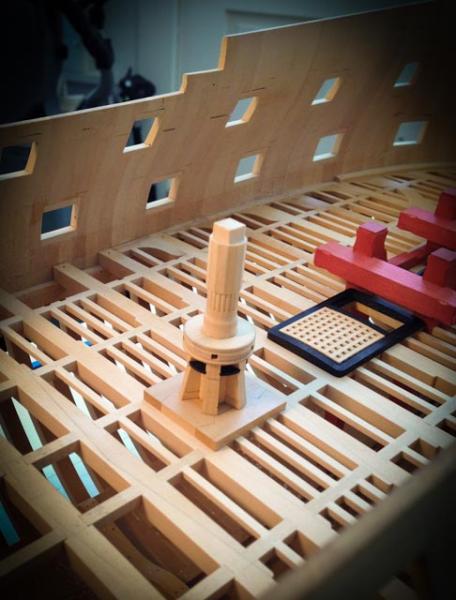
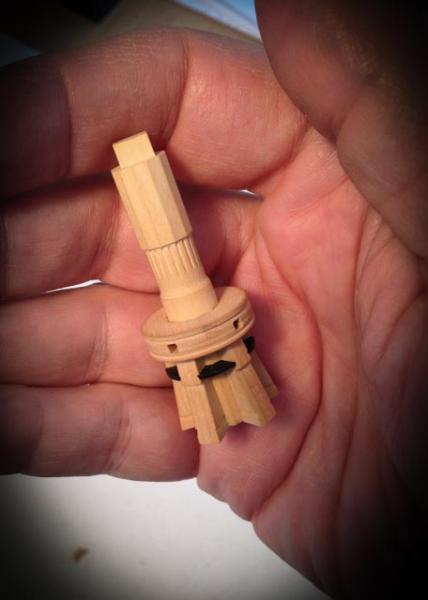
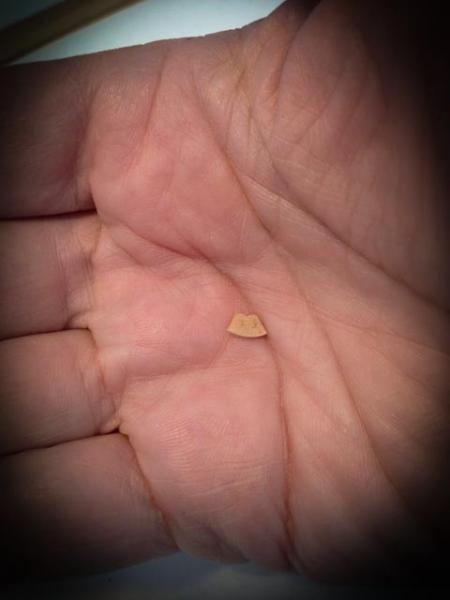
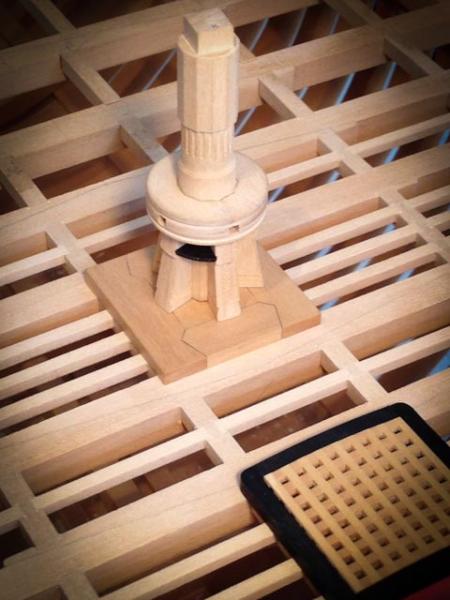
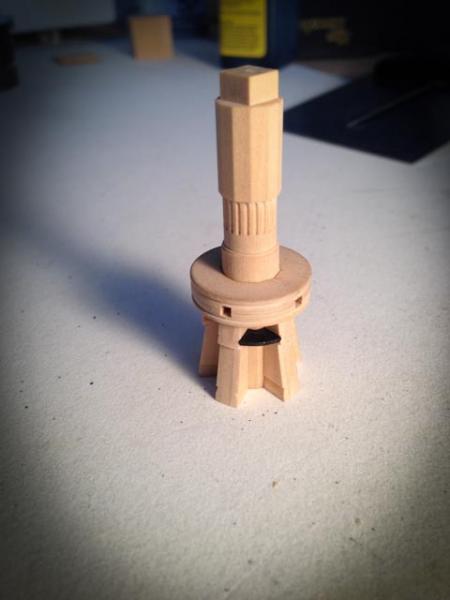
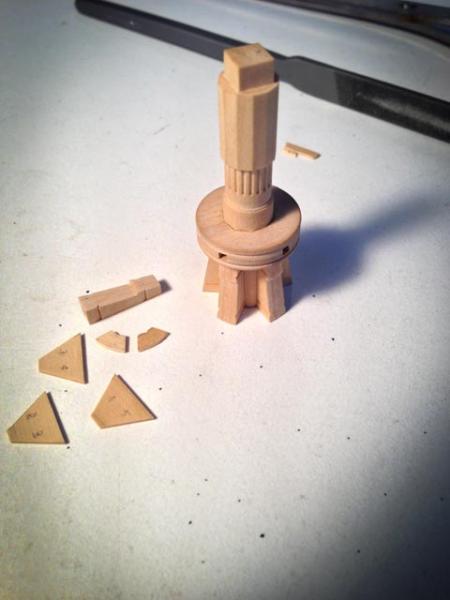
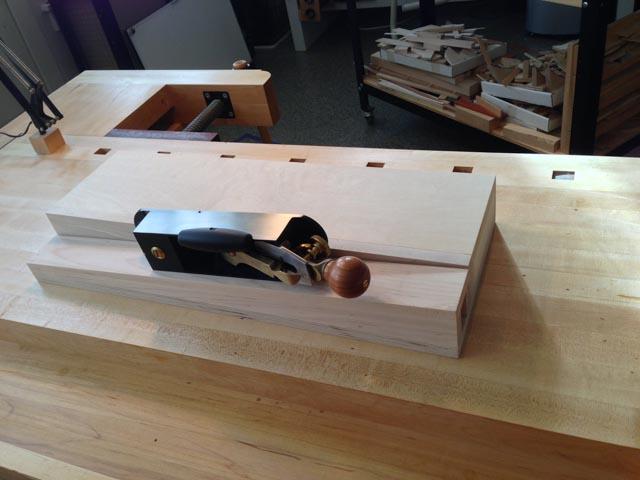
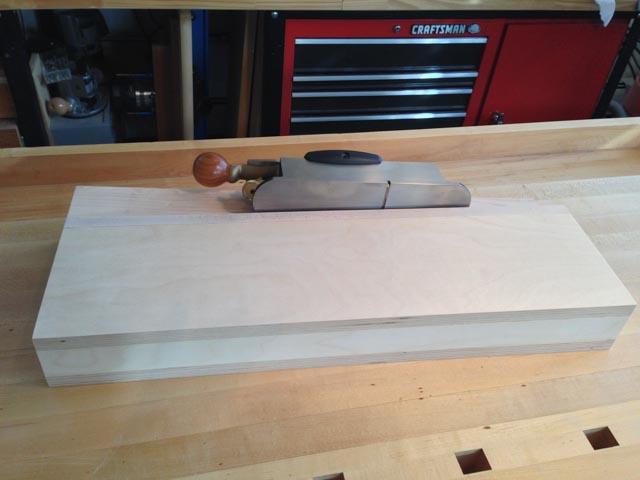
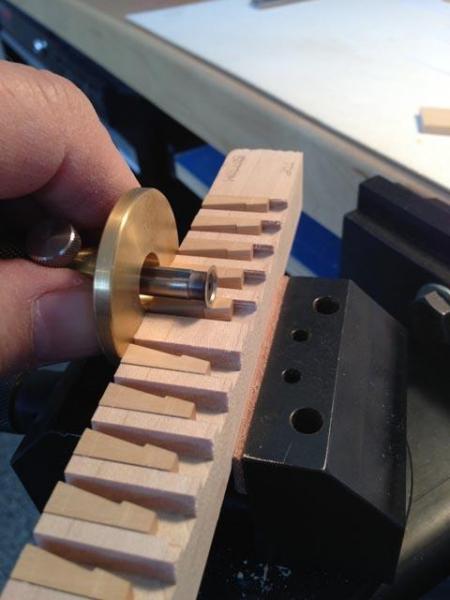
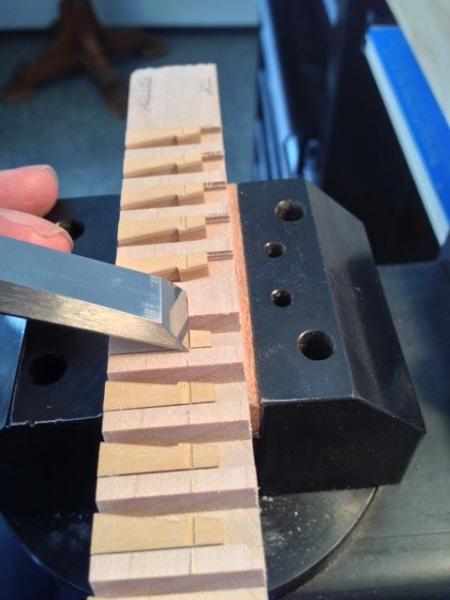
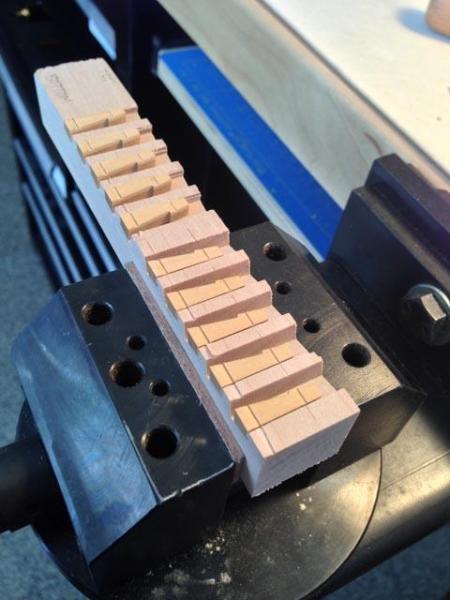
HMS Bellona 1760 by SJSoane - Scale 1:64 - English 74-gun - as designed
in - Build logs for subjects built 1751 - 1800
Posted
Thanks, Mark and Grant. My wife asked me if we would ever see this when the model is done. I explained that the modelmaker of the original 1760 Bellona model is likely looking over my shoulder, making sure I keep standards up...
Guy, it is probably late for me at this point. I lofted all of the frames back in the 90s before I started using CAD. And the details are now half a lifetime of research based on dozens of sources. It would be interesting to see someone else's reconstruction of the ship. Are the drawings published anywhere?
I am taking a break from the hull for a short time, while I sort out the Byrnes ropewalk and set up a rigging table based on Steel. I have posted a few questions over in Tools and in Rigging. I thought it better to keep these off the build log.
Best wishes,
Mark